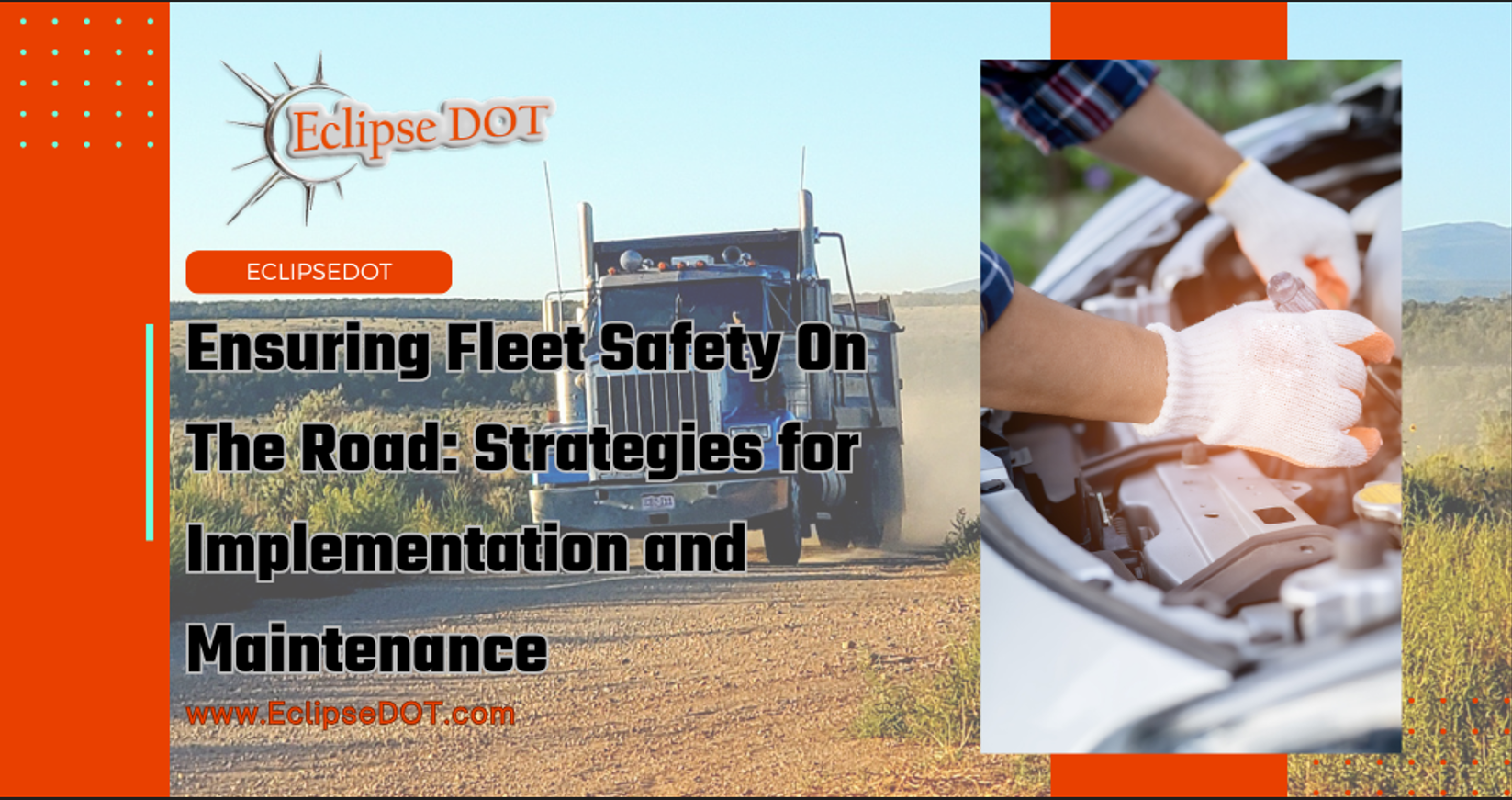Fleet safety is a non-negotiable cornerstone in the transportation industry. Safety is critical and a top priority for companies like yours. It’s essential for both you and your drivers to understand why safety matters on and off the road and what steps to take to stay compliant.
The Federal Motor Carrier Safety Administration (FMCSA) sets and enforces safety standards for commercial fleets. However, navigating FMCSA regulations can be challenging for fleet operators. Compliance with DOT regulations isn’t just about avoiding fines; it’s about safeguarding lives and reputations.
Let’s dive into ensuring your fleets are safe on the road and explore why driver training is crucial.
Safety Measures for Fleet Operations
The FMCSA regulates every commercial driver on the road to ensure compliance and safety. Here are key measures your drivers should be aware of to stay compliant and safe:
Vehicle Inspection Protocols: Implement thorough pre-trip and post-trip inspection procedures to identify and address potential safety hazards. The FMCSA outlines specific requirements for these inspections, covering various vehicle components and systems. Documentation of maintenance and inspections is critical.
Driver Safety Training: Training programs covering defensive driving techniques, hazard awareness, and emergency response protocols equip your drivers with the skills necessary to navigate challenging situations. Investing in driver safety training fosters a culture of professionalism and accountability, reducing accidents and improving fleet safety.
Safety-Oriented Culture: Promote a culture of safety within your organization by encouraging open communication, accountability, and a zero-tolerance policy for unsafe behavior. Establish and maintain safety management systems that promote safety and compliance.
Successful implementation of these safety measures requires effort at all levels of the organization, with leadership setting the tone and providing resources to support safety initiatives.
Training for Safety
Finding a trusted training partner for safety is crucial. Our safety training programs cover compliance with FMCSA regulations, safe driving practices, and proactive risk management strategies. We tailor our programs to address the unique challenges and needs of your fleet, taking into account factors such as geographic location, cargo type, and operational requirements.
We train fleets to focus on specific concerns, such as inclement weather driving or handling hazardous materials. By addressing fleet-specific risks and challenges, we help prepare drivers to navigate their daily operations safely.
If you’re looking for a trusted training partner, we are here to help you and your drivers stay safe and compliant on the road. Our in-house DOT experts offer customized training for any fleet size.
Contact us today to see how we can help your drivers stay safe on the road.
Maintaining Compliance and Enhancing Safety
Now that we’ve covered driver safety and training, let’s discuss regular audits and continuous improvement:
Regular Audits and Inspections: Conduct routine audits and inspections to ensure compliance with FMCSA regulations and internal safety protocols. Identify areas for improvement and implement corrective actions as needed. Regular audits help fleets identify and correct compliance issues before they escalate, reducing the risk of fines and penalties.
Continuous Improvement: Foster a culture of continuous improvement by soliciting feedback from drivers, analyzing incident reports, and implementing corrective measures to mitigate risks and enhance safety outcomes. The FMCSA’s Safety Management Systems (SMS) framework emphasizes ongoing evaluation and improvement.
By adopting a proactive approach to safety management, fleets can maintain compliance with regulatory requirements, elevate safety performance, and protect their most valuable assets – their drivers and the public.
Staying Safe on The Road
By understanding and adhering to safety requirements, implementing proactive safety measures, investing in comprehensive training programs, and leveraging technology to maintain compliance and enhance safety, fleets can navigate the road ahead with confidence and integrity.
Let’s commit to prioritizing safety, embracing a culture of continuous improvement, and working together to ensure safer roads for all.
Contact us today to set up a training program for your crew!
Until next time!
Discover our CDL & DOT Compliance blog for an exclusive trial at DOTDocs.com. Also, claim your FREE micro audit at THE ECLIPSE DOT MICRO AUDIT. Ready for smoother operations?






2 thoughts on “Ensuring Fleet Safety On The Road: Strategies for Implementation and Maintenance”
Hi there, just became aware of your blog through Google,
and found that it’s truly informative. I’m going to watch out
for brussels. I will be grateful if you continue this in future.
Lots of people will be benefited from your writing.
Cheers! Escape rooms hub
I like this website it’s a master piece! Glad I detected this on google.?